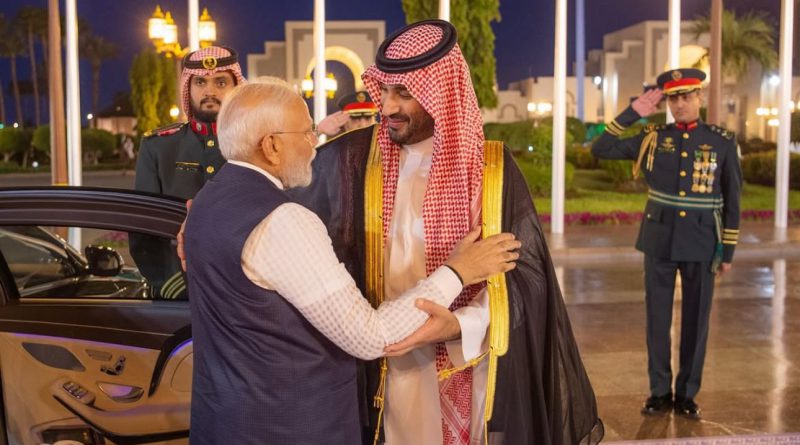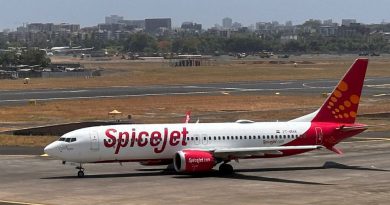Saudi Arabia and India Sign $100 Billion Partnership Deal
Riyadh — Saudi Arabia and India have inked a sweeping $100 billion strategic partnership deal during Prime Minister Modi’s historic visit to Jeddah on Tuesday. The agreement, hailed as one of the most ambitious collaborations between an Asian and a Gulf nation, aims to bridge the two countries through a shared commitment to development, innovation, and regional leadership.
The signing followed a highly anticipated summit between Saudi Crown Prince Mohammed bin Salman and Indian Premier in the historic city of Jeddah which is 80 kms away from the Holy City of Mecca.
Officials from both sides described the discussions as “brotherly,” a term that reflects more than diplomacy—it suggests a vision grounded in mutual respect and forward-looking ambition.
Energy and Sustainability at the Core
Half of the deal—$50 billion—is earmarked for energy cooperation, underscoring the sector’s centrality to the partnership. Two state-of-the-art Saudi-funded oil refineries will be built in India, aiming to reduce dependency on energy imports from third countries and enhance India’s refining capacity.
But this isn’t just about fossil fuels. In a signal of shared green ambition, energy giants like Aramco and SABIC will also collaborate with Indian counterparts on hydrogen production and renewable technologies.
There’s even a joint feasibility study in the works for a cross-border electricity grid, which could one day allow energy to flow between the two nations—a vision of sustainable interdependence rarely seen on the global stage.
Revving Up Infrastructure and Industrial Collaboration
Another $20 billion will be steered into infrastructure and manufacturing, primarily through the Saudi Public Investment Fund. Indian port cities and metro rail networks are expected to be key beneficiaries, boosting urban mobility and freight efficiency.
A standout initiative is the Bharat Mobility Corridor, which will connect key logistics hubs across India.
At the same time, over 40 Indian firms are preparing to set up their regional headquarters in Saudi Arabia, in alignment with the Kingdom’s Vision 2030 economic diversification goals. It’s a two-way street of investment, jobs, and shared growth.
New Security Ties in a Changing World
With $15 billion allocated to defense and security, the deal also marks a significant turn in military cooperation. The establishment of a bilateral Defense Cooperation Committee lays the groundwork for joint military exercises and technology sharing, particularly in the rapidly evolving drone and surveillance sectors.
This level of military synergy signals more than a transactional relationship—it’s a long-term alignment in response to shifting geopolitical dynamics, from the Red Sea to the Indian Ocean.
Betting on the Future: Tech, Space, and Startups
The agreement also places a bold bet on the future. A $10 billion investment package will boost India’s innovation sectors, especially artificial intelligence, biotech, and space technology.
Saudi venture capital is expected to flow into Indian startups, fostering a tech pipeline that stretches from Bengaluru to Riyadh.
Four new MoUs related to space research were signed, including proposals for satellite launches and collaborative missions. The nations also announced joint initiatives in postal tech upgrades and anti-doping research, reflecting a broader embrace of science and ethics in global cooperation.
People, Culture, and the Soft Power Connection
Topping off the deal is a $5 billion investment in cultural and human exchange. Saudi Arabia has increased India’s annual Hajj quota to over 175,000 pilgrims, recognizing the deep spiritual ties between the countries.
In a unique cultural twist, the Kingdom is also investing in Bollywood, a move that not only celebrates Indian cinema but also enhances Saudi Arabia’s own cultural soft power.
Restoration projects for historical sites in both countries are on the agenda, reinforcing the idea that heritage and history are assets—not just artifacts—in diplomacy.
A Deal Measured in More Than Dollars
This isn’t just a $100 billion agreement—it’s a strategic realignment. It signals a world where oil partnerships coexist with clean energy dreams, and where security ties are reinforced with shared tech and cultural understanding.
As the Indo-Gulf axis grows stronger, India and Saudi Arabia are setting a precedent. Not merely as trade partners or defense allies, but as co-architects of a new regional order—one built on shared prosperity, mutual respect, and a future-oriented vision.



